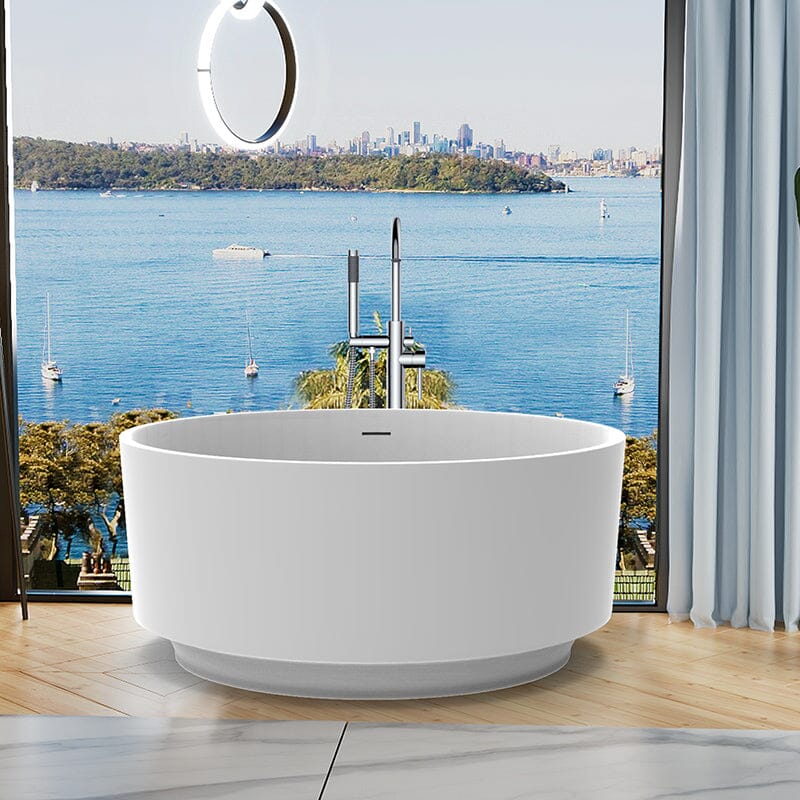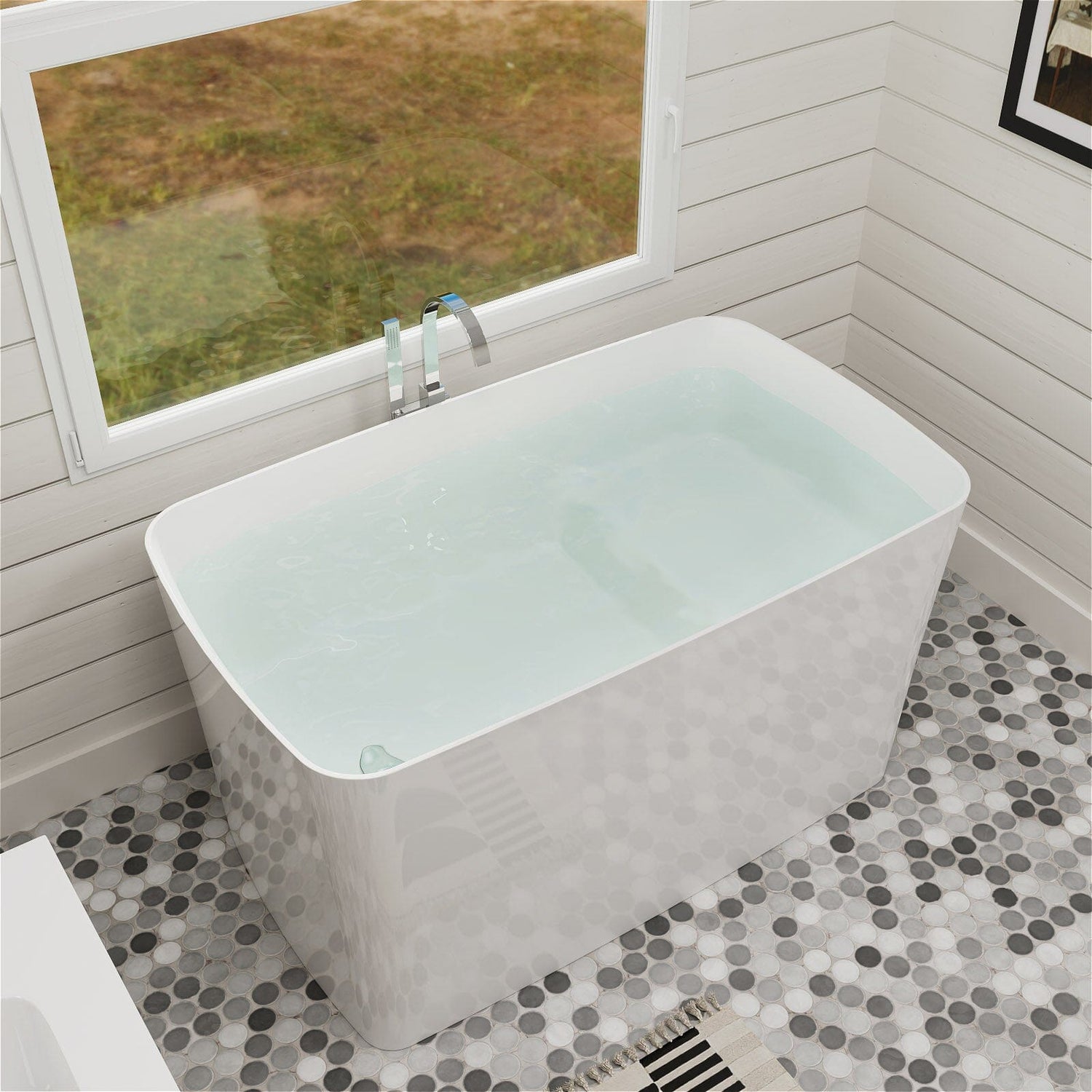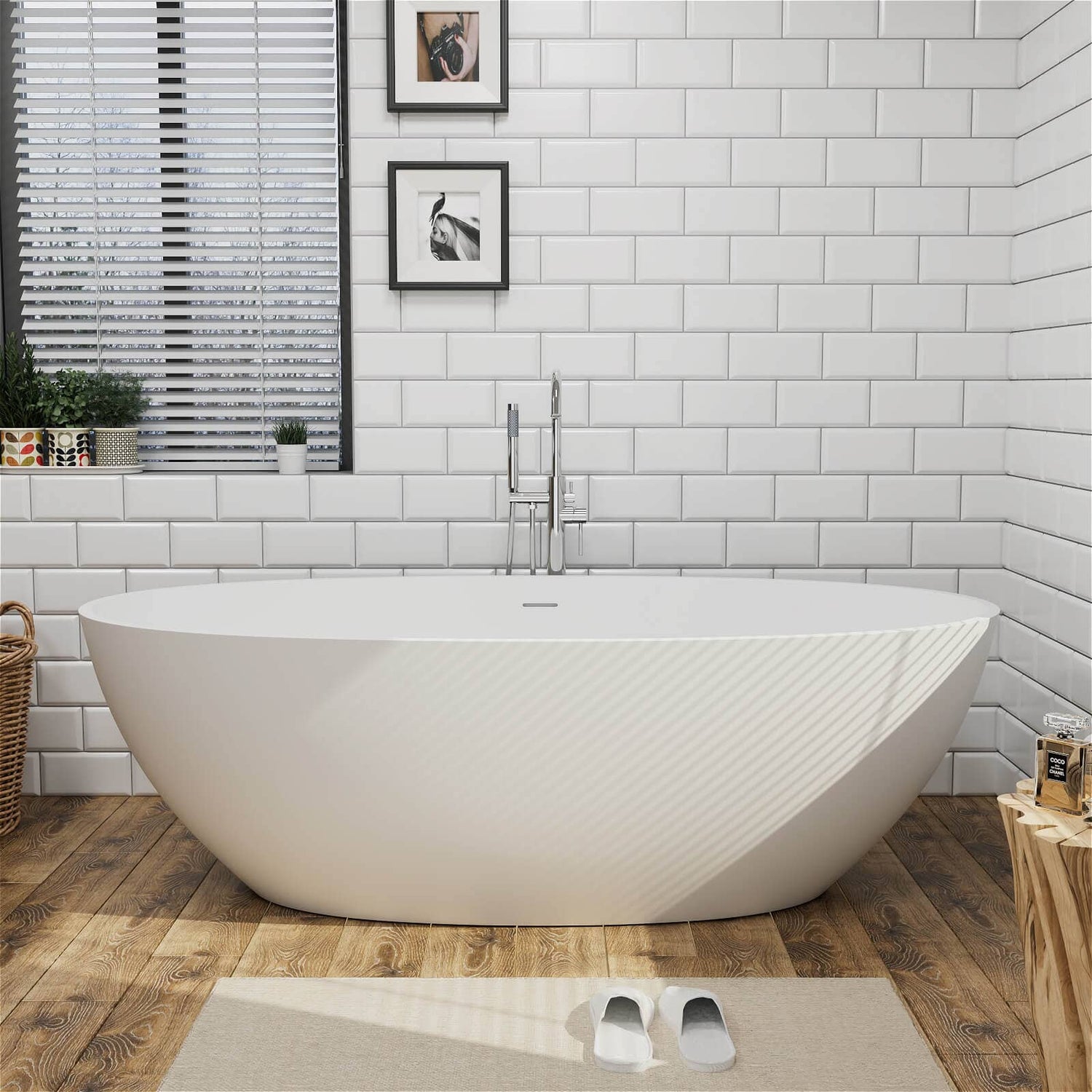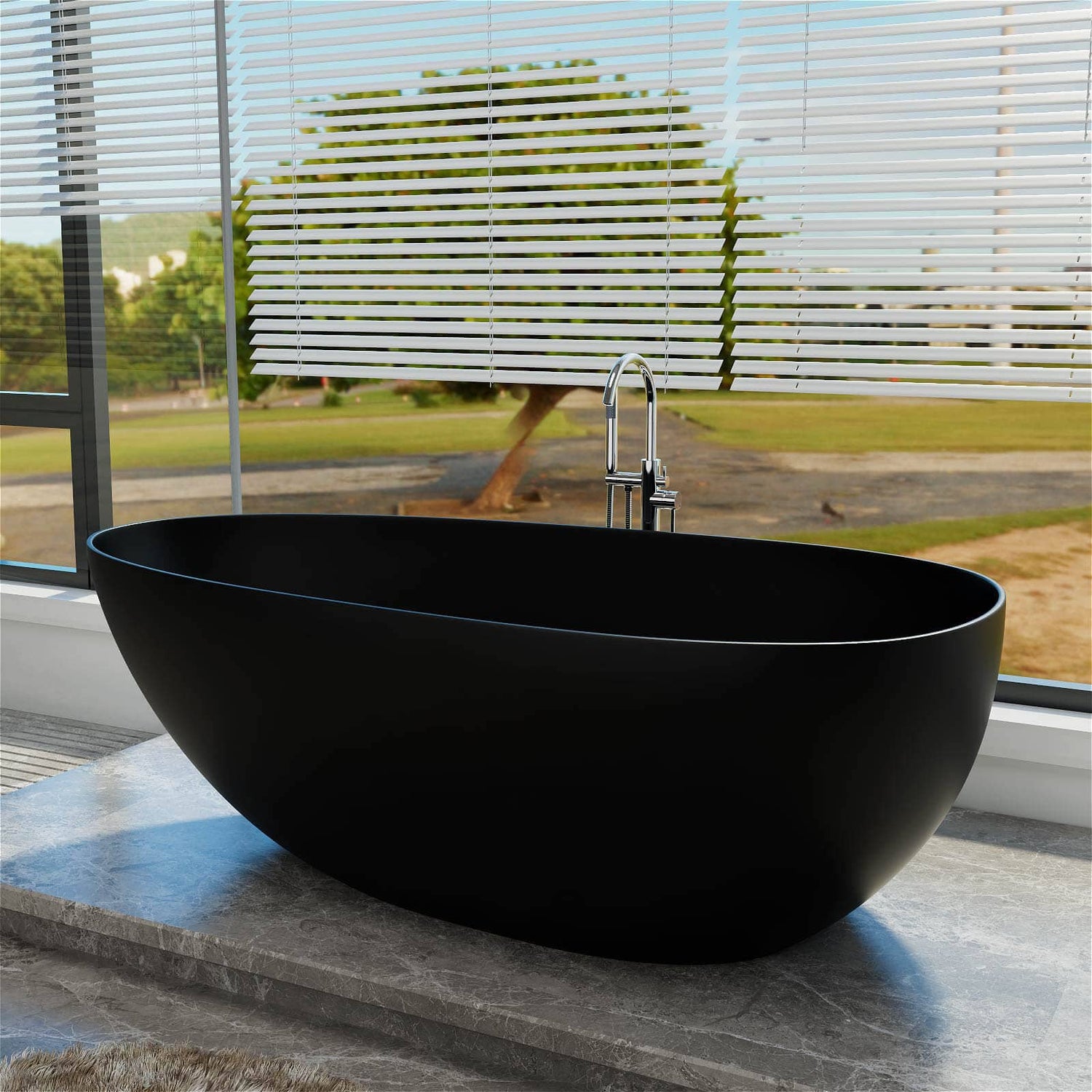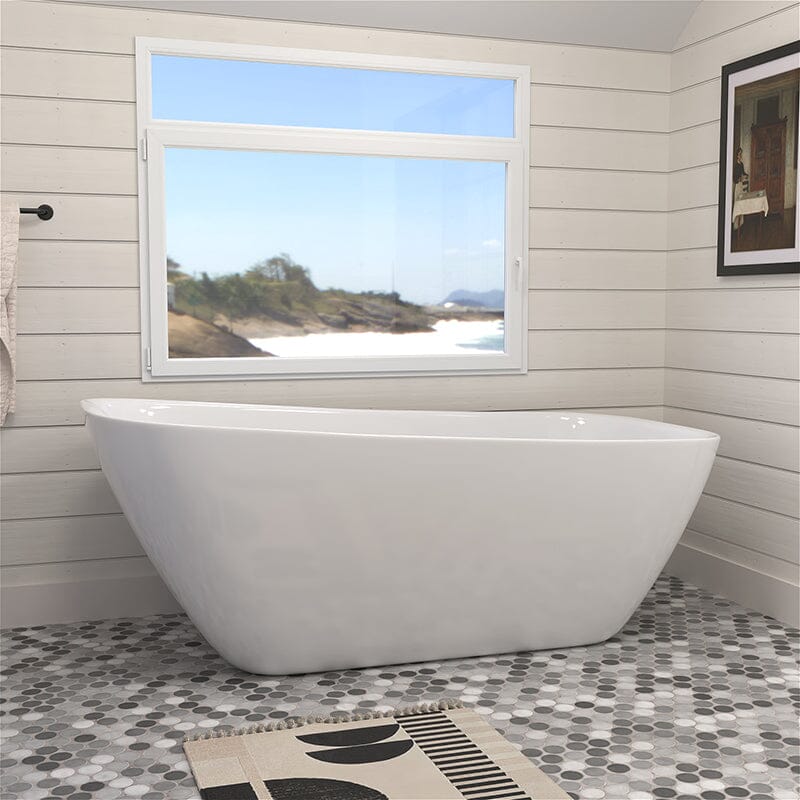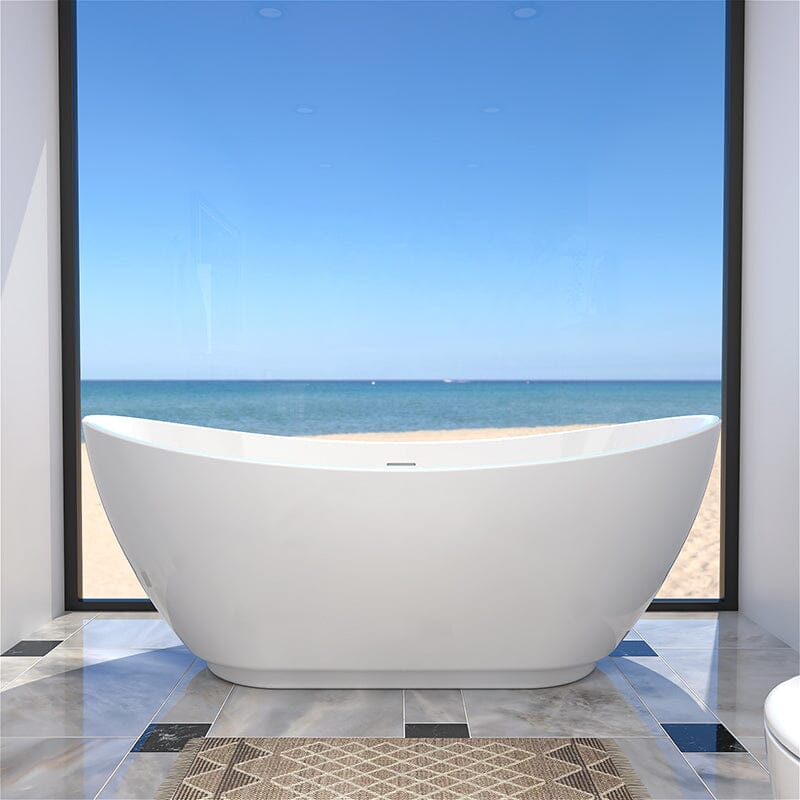When shopping for a freestanding bathtub, most people consider size, price, and color—but one key factor often overlooked is shape. The shape of a bathtub plays a huge role in not only the visual appeal of your bathroom but also in your comfort while soaking. Different shapes create different bathing experiences, influence the layout of your space, and even affect how much you pay. So how do you choose the right one? Let’s explore this topic in this article so you can find the perfect match for your home and lifestyle.
Shop Bathtubs by Shape
Pros and Cons of Different Bathtub Shapes
Common Shapes
-
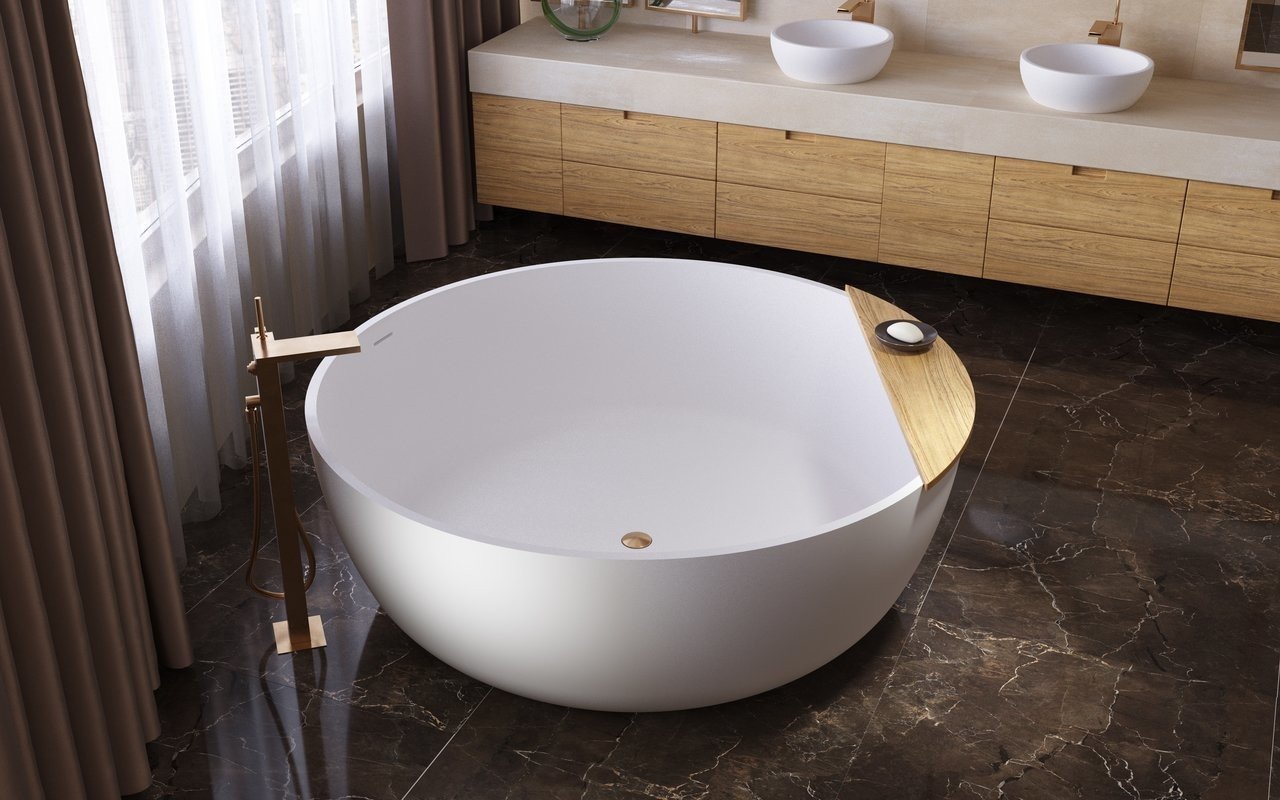
Round Bathtubs
Features:
A full circular shape, typically installed at the center of a bathroom to create a luxurious, eye-catching centerpiece.
Pros:
- Striking and elegant appearance—perfect for spa-like bathrooms aiming to impress.
- Spacious interior allows for free movement and an open soaking experience.
- Smooth, rounded edges soften the visual impact of angular modern interiors.
Cons:
- Vertical backrests offer minimal ergonomic support unless paired with cushions or custom-shaped contours.
- Requires substantial floor space, making it unsuitable for smaller bathrooms.
Size & Price Notes:
Round tubs typically have a diameter of less than 60 inches. Anything larger may not fit well in a standard residential bathroom. Due to their size and unique design, round tubs are generally more expensive, with prices ranging from $1,500 to $7,000.
-
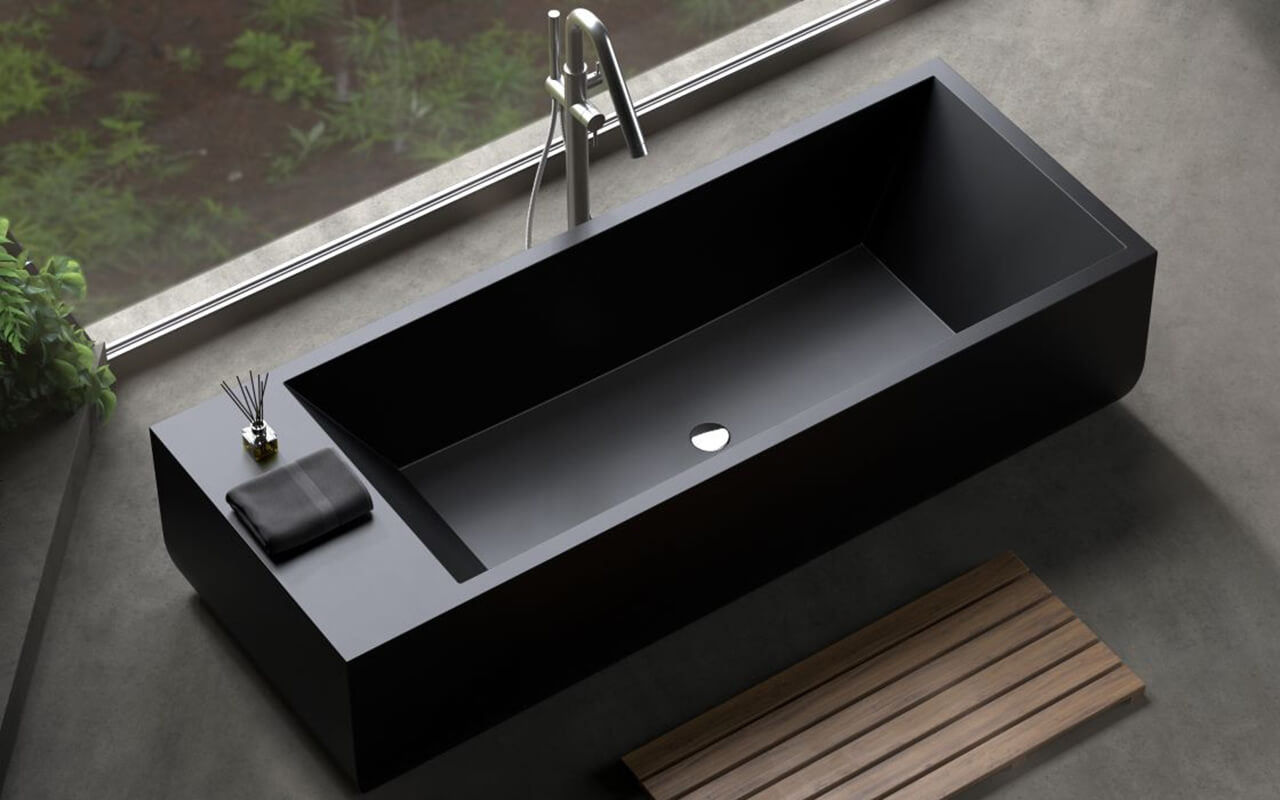
Rectangular Bathtubs
Features:
Defined by clean straight lines and 90-degree corners, these tubs are typically installed against walls, in alcoves, or as drop-in units.
Pros:
- Maximizes space efficiency, making them perfect for small to medium-sized bathrooms.
- Highly versatile—can be freestanding, built-in, or drop-in, and fits neatly into corners or along walls.
- Compatible with most plumbing fixtures, making renovations or upgrades easier.
- Budget-friendly with a wide range of options from entry-level to luxury models.
Cons:
- Conventional look may lack the wow factor for modern or upscale designs.
- Sharp corners can be less kid-friendly and may feel harsh compared to rounded alternatives.
Size & Price Notes:
Available in compact sizes starting at 47 inches and going up to 72 inches. Due to their ubiquity, they’re generally the most affordable and cost-efficient option.
-
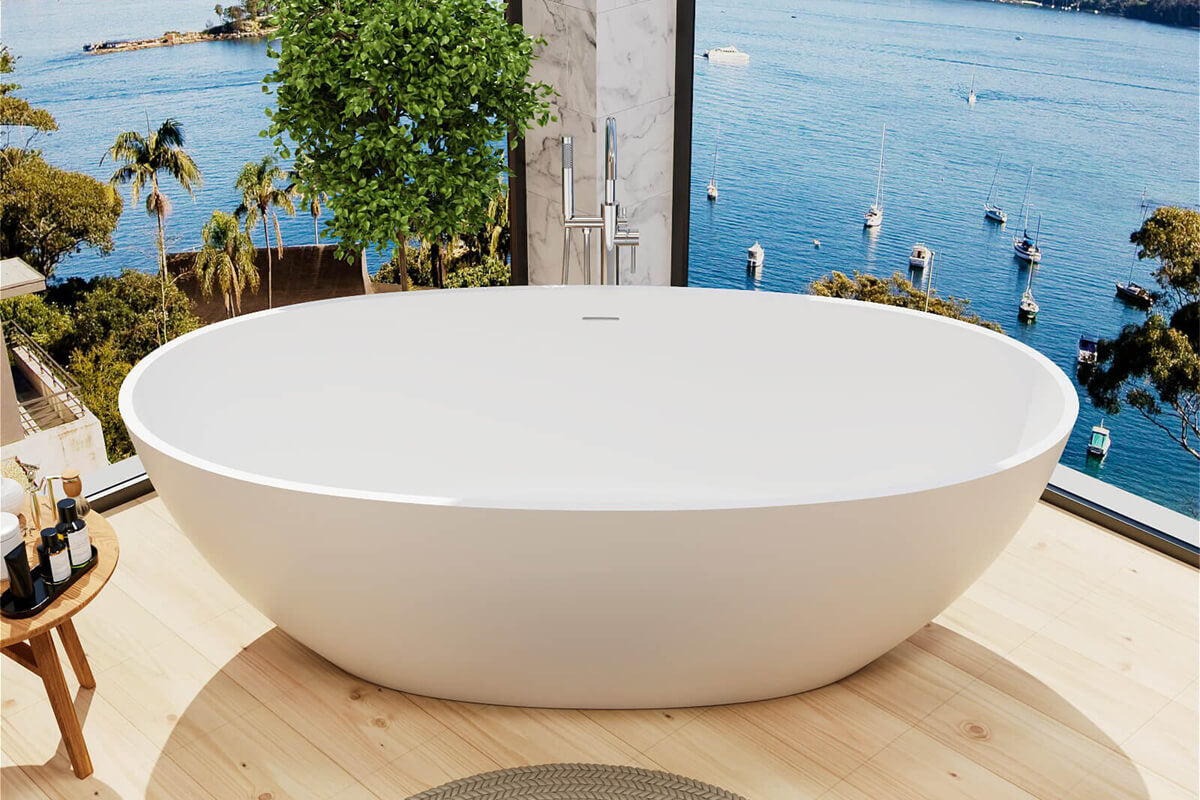
Oval Bathtubs
Features:
A refined version of the rectangle, with symmetrical, curved edges that soften its visual profile.
Pros:
- Sleek and contemporary aesthetic that suits modern interior styles.
- Ergonomically curved basin naturally conforms to the body for enhanced soaking comfort.
- Freestanding design acts as a centerpiece in open-plan bathrooms.
Cons:
- Requires more floor space than a rectangular tub of similar length.
- Not ideal for wall-mounted faucets or shower combos due to curved edges.
Size & Price Notes:
Commonly range between 60 to 72 inches. Generally more expensive than rectangular tubs, with pricing reflecting design elegance and soaking depth.
-
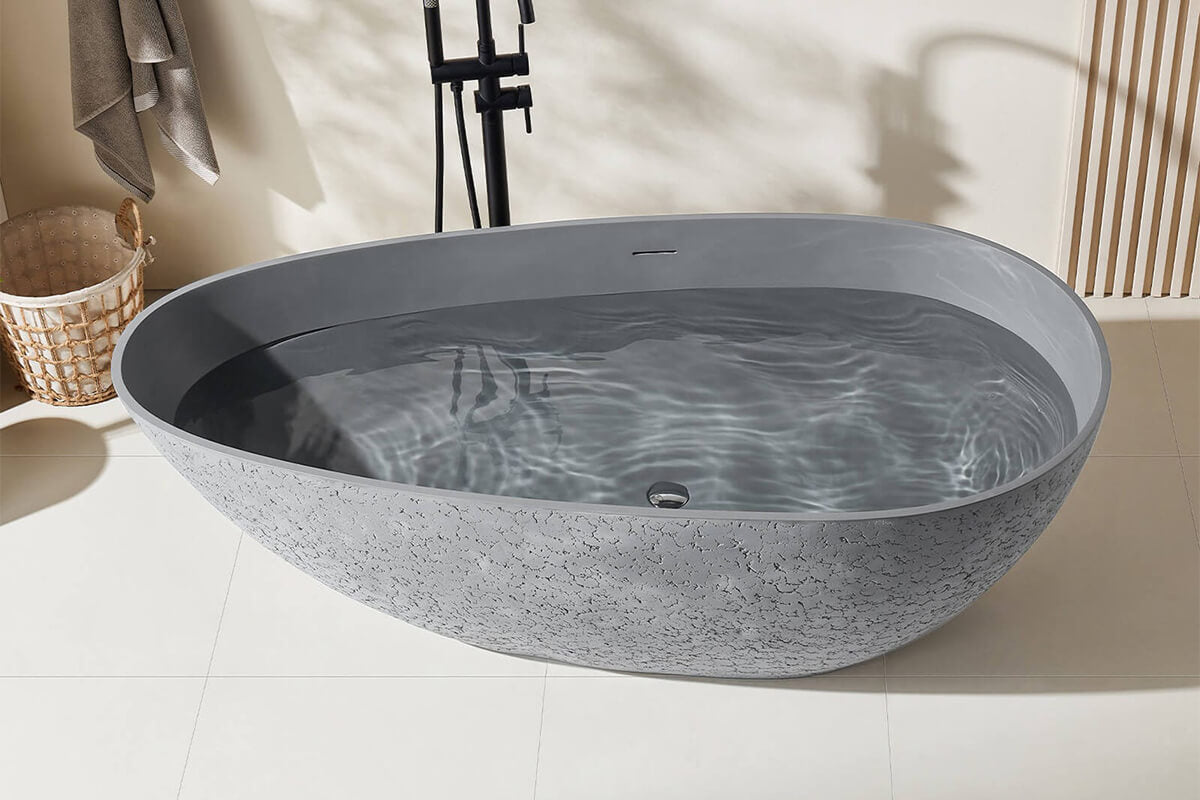
Egg-Shaped Bathtubs
Features:
A stylish hybrid of oval and round forms, with a subtle taper and gently sloped sides.
Pros:
- Modern and sculptural, ideal for design-forward bathrooms.
- Supports a relaxed, reclined posture with elegant back curves.
- Smooth contours offer a seamless, organic look.
Cons:
- Fewer size and configuration options compared to standard shapes.
- Typically freestanding, which may require more floor clearance and custom plumbing.
Size & Price Notes:
Sizes usually start around 60 inches. Positioned in the mid-to-high price range, egg-shaped tubs are a step up in both comfort and design sophistication.
Unique Shapes
-
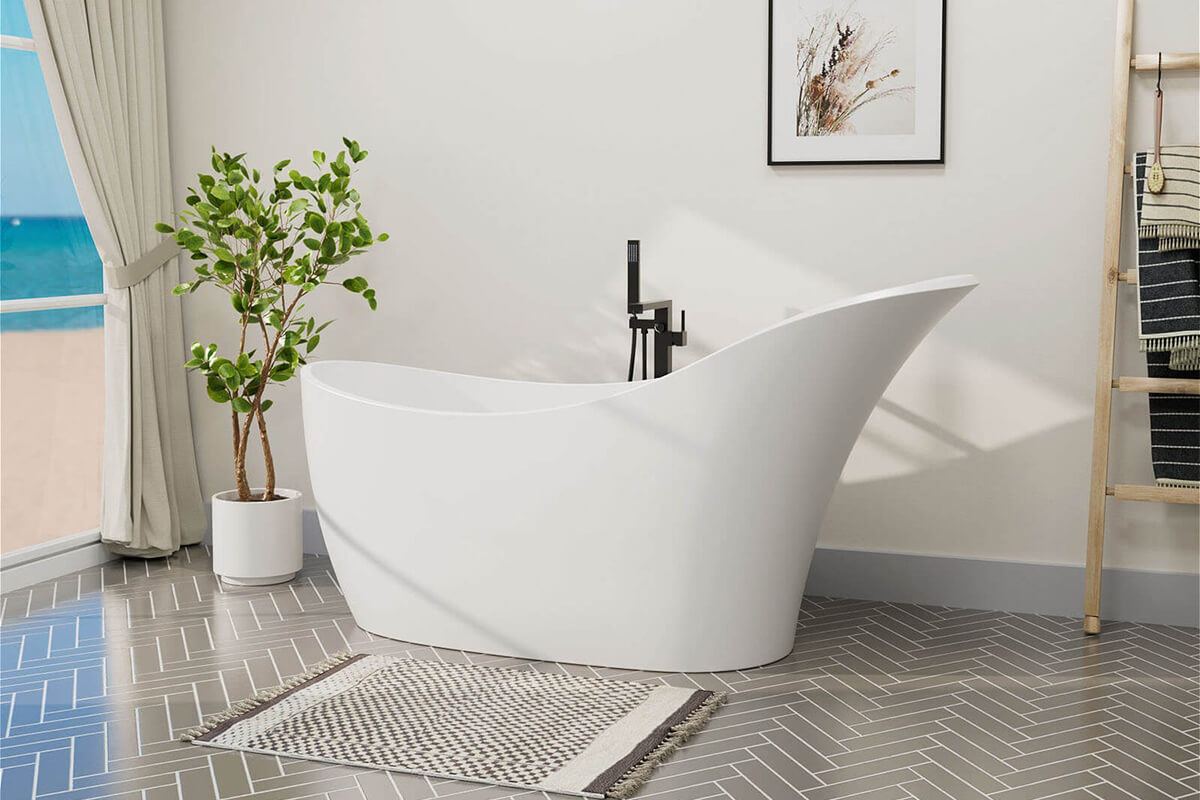
Single Slipper Bathtubs
Features:
One end of the tub is raised higher to support the back and neck while reclining.
Pros:
- Perfect for long, luxurious soaks with ergonomic back support.
- Vintage charm—especially popular in clawfoot versions for classical interiors.
- Visually dynamic, adding elegance to standalone bathtub displays.
Cons:
- Not ideal for two-person bathing due to the sloped design.
- The elevated end can reduce usable interior space for some users.
Size & Price Notes:
Typically ranges from 55 to 68 inches. Prices generally fall between $700 and $4,000, depending on the material, finish, and whether the tub features clawfoot or pedestal support.
-
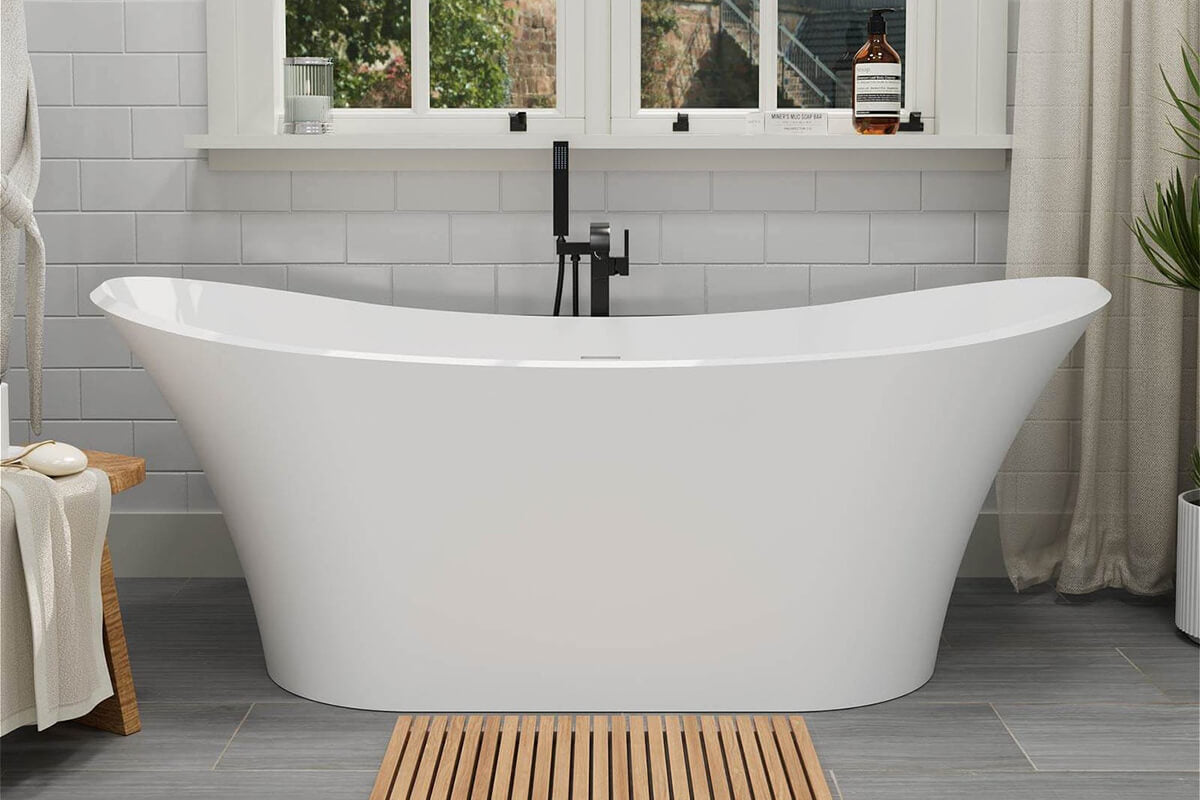
Double Slipper Bathtubs
Features:
Both ends are raised, creating a symmetrical silhouette that supports reclining from either side.
Pros:
- When generously sized, they provide a romantic and spacious option for couples.
- Timeless design—especially in clawfoot styles—evokes vintage elegance and old-world luxury.
- Center drain placement offers better weight distribution and comfort for dual use.
Cons:
- Bulkier and heavier, often requiring reinforced flooring.
- Installation is more complex due to size and weight.
Size & Price Notes:
Often exceeds 65 inches in length. Cast iron or copper versions are especially costly, with prices generally ranging from $1,500 to $7,000—and high-end artisan models reaching $20,000 or more.
-
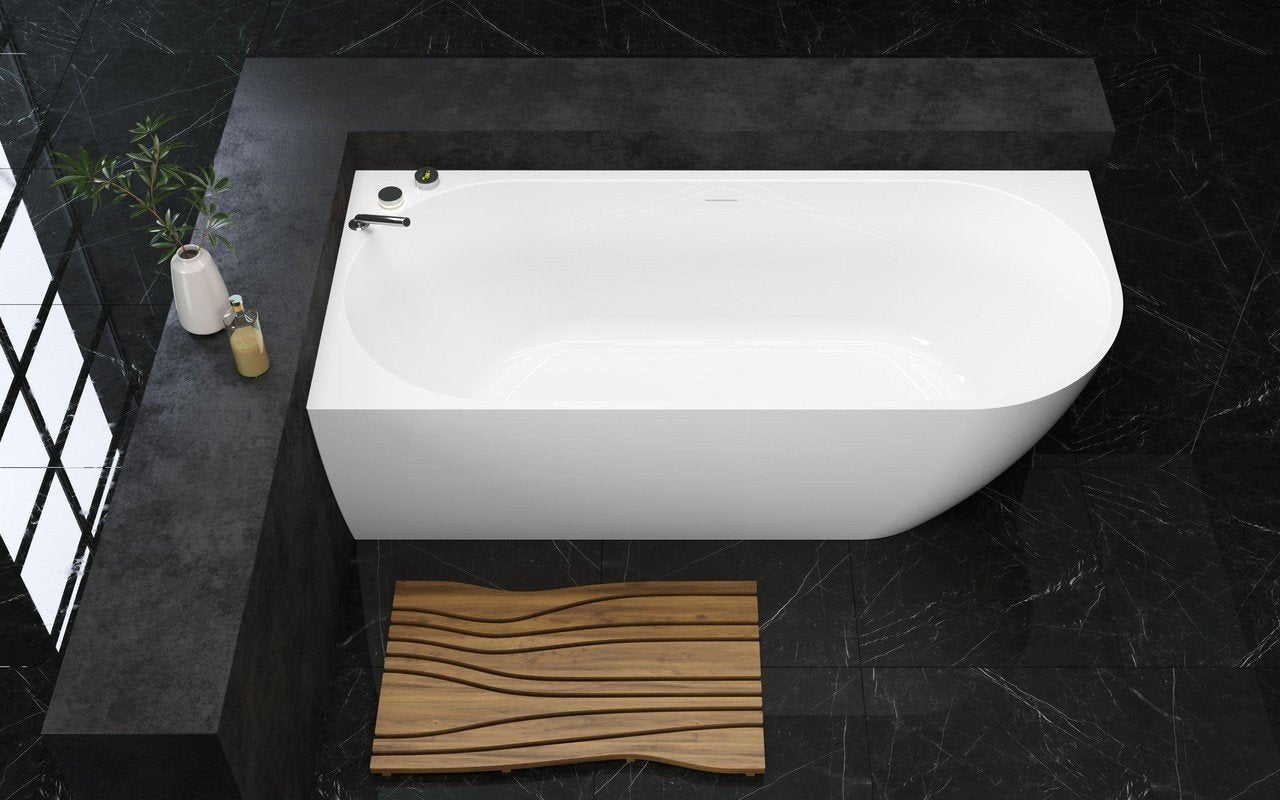
Corner Bathtubs
Features:
Designed to fit snugly into the corner of a bathroom, usually with a triangular or fan-shaped footprint and a wide basin area for deep soaking.
Pros:
- Makes efficient use of corner space—great for compact or oddly shaped bathrooms.
- Offers generous interior space despite a space-saving layout.
- Adds a touch of elegance and luxury with a modern or spa-like aesthetic.
Cons:
- More complex installation due to shape and plumbing configuration.
- Fewer compatible accessories like standard faucets or wall-mounted fixtures.
- May require custom cabinetry or tilework for seamless integration.
Size & Price Notes:
Because they are often semi-custom or designer-made to suit specific layouts, they tend to fall on the higher end of the price spectrum compared to standard tubs.
-
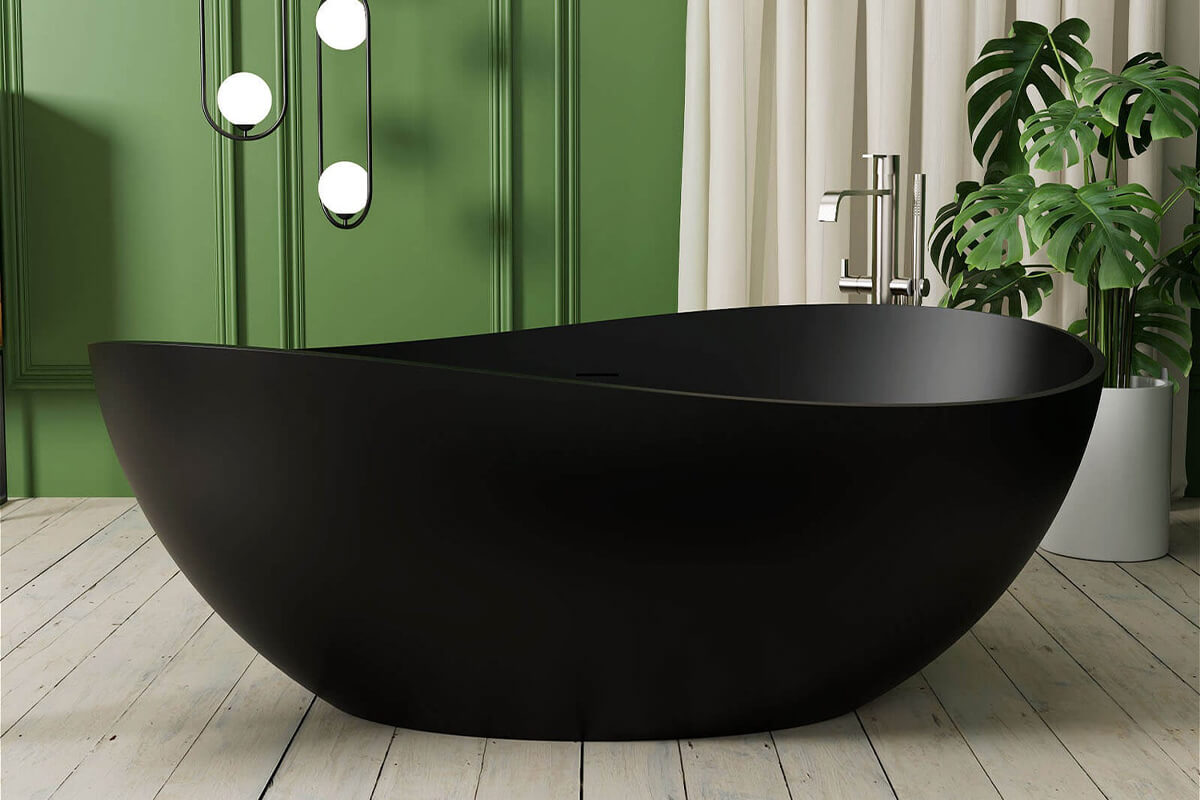
Curved Bathtubs
Features:
These tubs break away from traditional geometry with sweeping curves and asymmetrical profiles.
Pros:
- Eye-catching and artistic, ideal for modern design enthusiasts.
- Deeper and more immersive, often mimicking the feel of a soaking spa.
- Unique visual flow can soften angular bathroom layouts.
Cons:
- Difficult to clean due to non-linear shapes.
- Not always compatible with standard hardware like faucets, trays, or shower conversions.
Size & Price Notes:
Often custom or designer-made, with sizes ranging broadly from 60 to 75 inches. Their bespoke nature means they are typically on the high end of the price spectrum.
How to Choose the Most Suitable Bathtub Shape
Choosing the right bathtub shape isn’t simply a matter of preference—it requires a strategic assessment of your bathroom’s layout, your personal lifestyle needs, and your aesthetic goals. Below, we break down the key considerations that should guide your decision, helping you find the most suitable shape with both function and design in mind.
Assessing Spatial Compatibility: Matching Tub Shape to Bathroom Layout
The shape of your bathtub must harmonize with the spatial logic of your bathroom. Rectangular tubs, for instance, are best suited for narrow or compact spaces due to their straight edges, which allow them to sit flush against walls or fit neatly into alcoves. This makes them a default choice for most standard bathrooms.
In contrast, round and oval bathtubs are more sculptural in form and require greater floor clearance. These are ideal in large, open-plan bathrooms where space is not constrained and the tub can serve as a central visual feature. Corner bathtubs, meanwhile, are designed to optimize underutilized corners, offering a smart compromise between saving space and achieving a luxurious soaking experience.
Expert Tip: Always map out your bathroom dimensions and consider traffic flow. A beautiful tub that impedes movement or blocks cabinet access quickly becomes a daily nuisance.
Design Harmony: Aligning Shape with Interior Style
The visual language of your bathroom plays a crucial role in determining which tub shape will feel cohesive rather than out of place. For traditional or transitional designs, rectangular and slipper-shaped bathtubs (particularly clawfoot styles) bring a sense of elegance, structure, and vintage charm.
On the other hand, modern or spa-inspired bathrooms benefit from softer shapes—like oval or round bathtubs—that evoke a feeling of serenity and flow. These shapes pair well with floating vanities, frameless showers, and neutral palettes.
Expert Tip: If your bathroom features mostly hard lines (tiles, square fixtures, etc.), a curved bathtub adds a needed contrast to soften the overall design.
User Comfort & Ergonomics: Choosing a Shape That Fits Your Body and Routine
A bathtub should conform to the user—not the other way around. If long, meditative soaks are a regular part of your lifestyle, opt for a shape with built-in ergonomic features. Oval and slipper tubs typically have curved basins that cradle the back, making them more comfortable for extended use.
For elderly users or people with limited mobility, bathtubs with lower step-in heights and upright backs—like tubs with integrated seating—are often safer and easier to use. Double slipper tubs, while romantic in concept, are only practical for couples if the size exceeds 70 inches; otherwise, they’re too tight for dual soaking.
Expert Tip: Test the incline and interior shape of the tub if possible. Aesthetics are secondary if the tub doesn’t support your spine or feels awkward during use.
Functional Requirements: Plumbing, Fixtures, and Installation
Some bathtub shapes provide more flexibility for installation and accessory compatibility. Rectangular tubs usually offer the easiest path for incorporating wall-mounted or deck-mounted faucets, shower conversions, and overflow drainage systems due to their flat surfaces.
More sculptural shapes, such as oval or round tubs, often require freestanding or floor-mounted plumbing, which can complicate installation and drive up costs. Corner tubs may need custom fixtures or unique drainage routing depending on your bathroom’s configuration.
Expert Tip: Before falling in love with a tub shape, consult your plumber or contractor. Some shapes require more renovation work than others and may not be feasible without major infrastructure changes.
Ending
Don’t let the allure of a sculptural tub blind you to practical constraints. Always begin your selection process with an honest assessment of your bathroom layout, your daily habits, and who will be using the tub most frequently. Consult with your interior designer or plumber when in doubt—especially if your favorite shape comes with special installation requirements.
More Ideas
-

Double Sink vs Single Sink Vanity: Which Fits Your Bathroom Best
Compare double sink vs single sink vanity to find the perfect fit for your bathroom. Determine your bathroom size, costs, and intended use before you remodel.
-

When Is the Best Time to Take a Shower?
For many of us, showering is more than just washing up—it’s a small daily ritual that affects how we sleep, how our skin feels, and even our overall well-being. But...
-

What Is a Shower Pan—and Do You Really Need One?
If you’re getting ready to renovate your bathroom on your own, you’ve probably run into a jungle of confusing terms. The same product may have multiple names, different materials come...
-

Shower Pan Installation: 6 Steps from Selection to Finish
Have you ever experienced this: after taking a shower, your bathroom floor is either soaked or has a puddle of water? It’s not just a hassle to clean—it’s also a...
-

Shower Pan Size Guide: Must-Know Dimensions Before You Buy
When planning a shower, most of us immediately think about style and layout. But the details that truly shape your daily experience often lie beneath your feet—that’s where the shower...
-

What’s the Best Material for a Vessel Sink?
When it comes to designing a bathroom, you might not give much thought to the material of your sink. After all, traditional under-mount sinks are usually ceramic, leaving little room...

